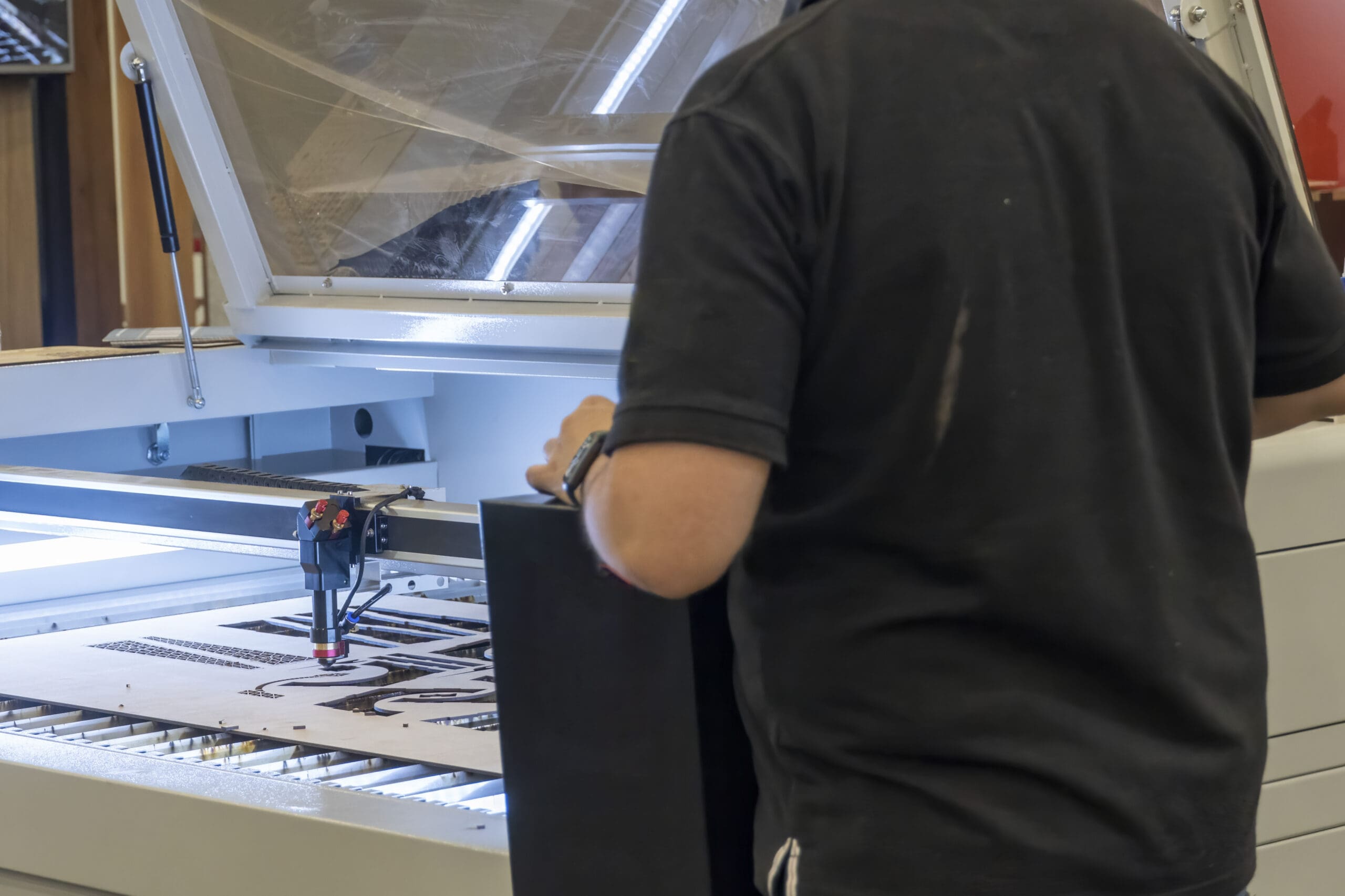
- Introduction
- What is screen printing?
- Why start a screen printing business?
- Research and planning
- Identify target market
- Assess competition
- Define business goals
- Equipment and supplies
- Screen printing press
- Screens and frames
- Inks and emulsions
- Drying equipment
- Other necessary tools
- Workspace setup
- Choose a suitable location
- Set up ventilation and lighting
- Organize workstations
- Legal considerations
- Registering your business
- Obtaining necessary licenses and permits
- Complying with health and safety regulations
- Creating a business plan
- Defining your services and pricing
- Establishing a marketing strategy
- Budgeting and financial projections
- Building a brand and online presence
- Designing a logo and brand identity
- Setting up a website and social media profiles
- Showcasing your portfolio
- Finding and serving clients
- Networking with local businesses and organizations
- Offering quality customer service
- Providing sample prints and proofs
- Managing production workflow
- Creating efficient production processes
- Sourcing materials and maintaining inventory
- Quality control measures
- Marketing and promotion
- Utilizing online marketing techniques
- Participating in trade shows and events
- Collaborating with influencers and local artists
- Managing finances and bookkeeping
- Tracking expenses and income
- Invoicing and payment processing
- Hiring an accountant or using accounting software
- Expanding your business
- Diversifying your product offerings
- Scaling up production capacity
- Exploring new markets and partnerships
- Troubleshooting common challenges
- Print quality issues
- Customer complaints and returns
- Managing time constraints
- Building a sustainable business
- Emphasizing eco-friendly practices
- Reusing and recycling materials
- Staying updated with industry trends
- Conclusion

How to Start a Screen Printing Business
Are you looking to venture into the exciting world of screen printing? Starting your screen printing business can be a rewarding and profitable endeavor. Whether you want to create custom apparel, promotional items, or artwork, screen printing offers endless possibilities. In this comprehensive guide, we’ll walk you through the steps to start your own screen printing business from scratch. So, let’s dive in and unleash your creativity!
1. Introduction
What is screen printing?
Screen printing, also known as silk screen printing, is a popular method of printing designs onto various materials, such as fabric, paper, and plastic. It involves transferring ink through a fine mesh screen onto a substrate, creating vibrant and long-lasting prints. Screen printing offers versatility in terms of colors, effects, and the ability to print on a wide range of materials.
Why start a screen printing business?
Starting a screen printing business can provide numerous benefits. Not only does it allow you to unleash your creativity and bring designs to life, but it also offers a lucrative opportunity in the market. Custom printed items are in high demand for businesses, sports teams, events, and individuals looking to express their unique identities. With the right approach, you can turn your passion for printing into a successful and profitable business venture.
2. Research and planning
Before diving headfirst into starting your screen printing business, it’s crucial to conduct thorough research and develop a solid plan. Here are the key steps to get you started:
Identify target market
Define your target market and understand their needs and preferences. Determine whether you will focus on serving specific industries, such as fashion, promotional products, or artistic niches. By identifying your target audience, you can tailor your services and marketing efforts to cater to their demands effectively.
Assess competition
Research existing screen printing businesses in your area and analyze their strengths and weaknesses. Identify gaps in the market that you can fill or areas where you can differentiate yourself from the competition. Understanding your competition will help you develop a unique selling proposition and position your business strategically.
Define business goals
Set clear and achievable goals for your screen printing business. Outline your vision, mission, and objectives. Determine what you aim to accomplish in the short and long term. Setting goals will provide direction and clarity, guiding you through the various stages of your business journey.
3. Equipment and supplies
To start a screen printing business, you need the right equipment and supplies. Here are the essential items you’ll need to invest in:
Screen printing press
A screen printing press is the centerpiece of any screen printing business. It holds the screens in place and facilitates the printing process. There are various options available, including manual, semi-automatic, and automatic presses. Choose a press that suits your production volume and budget.
Screens and frames
Screens with mesh fabric and frames are used to hold the stencil and transfer the ink onto the substrate. Purchase screens and frames in different sizes and mesh counts to accommodate various print sizes and levels of detail.
Inks and emulsions
Invest in high-quality screen printing inks that provide vibrant and durable prints. Choose inks that are compatible with your desired substrates, such as textile inks for fabric printing. Additionally, select emulsions for creating stencils on the screens.
Drying equipment
Properly drying the prints is essential for maintaining print quality. Depending on your budget and space availability, you can opt for drying racks, flash dryers, or conveyor dryers. Ensure that your drying method is efficient and produces consistent results.
Other necessary tools
Equip your workshop with other essential tools such as squeegees, scoop coaters, screen tape, exposure units, washout booths, and cleaning supplies. These tools are crucial for preparing screens, applying inks, and maintaining a clean and organized workspace.
4. Workspace setup
Choosing a suitable location and setting up your workspace efficiently is crucial for the success of your screen printing business. Consider the following factors when arranging your workspace:
Choose a suitable location
Select a location that provides adequate space for your equipment and workflow. Ensure it has proper ventilation, electrical capacity, and access for deliveries and pickups. If you plan to have a retail component to your business, choose a location that is easily accessible to customers.
Set up ventilation and lighting
Screen printing involves working with chemicals and inks that can emit fumes. Install adequate ventilation to maintain a safe and comfortable working environment. Additionally, ensure your workspace has proper lighting to accurately inspect prints and maintain productivity.
Organize workstations
Create separate workstations for each stage of the screen printing process, including screen preparation, printing, drying, and storage. Organize your equipment and supplies in a logical and ergonomic manner, ensuring easy accessibility and efficiency in your workflow.
5. Legal considerations
Starting a business involves navigating legal requirements and regulations. Ensure that you comply with all applicable laws and regulations to operate your screen printing business legally. Here are a few key considerations:
Registering your business
Choose a memorable and unique name for your business and register it with the appropriate government agencies. Consider the legal structure of your business, such as sole proprietorship, partnership, or corporation, and complete the necessary registration processes.
Obtaining necessary licenses and permits
Check with your local government to determine if you need any specific licenses or permits to operate a screen printing business. This may include general business licenses, sales tax permits, or permits related to operating in a commercial or industrial space.
Complying with health and safety regulations
Ensure that your workspace meets health and safety requirements. This includes proper chemical storage, ventilation, proper waste disposal, and adherence to fire safety regulations. Implement safety protocols to protect yourself, your employees, and your customers.
6. Creating a business plan
Developing a comprehensive business plan is essential for guiding your screen printing business. It helps you define your services, identify your target audience, and set realistic financial goals. Here are a few key aspects to consider when creating your business plan:
Defining your services and pricing
Clearly outline the services you will offer, such as screen printing on apparel, promotional products, or custom artwork. Determine the pricing structure for your services, considering factors like material costs, labor, and desired profit margins. Conduct market research to ensure your pricing is competitive.
Establishing a marketing strategy
Identify the marketing channels and strategies you will use to reach your target audience. Develop a strong online presence through a website, social media profiles, and online advertising. Explore offline marketing methods like attending trade shows, distributing flyers, or partnering with local businesses.
Budgeting and financial projections
Create a detailed budget that includes startup costs, equipment purchase, employee wages, marketing expenses, and ongoing operational costs. Develop financial projections that outline your expected revenue, expenses, and profitability over the first few years of your business.




Leave a Reply